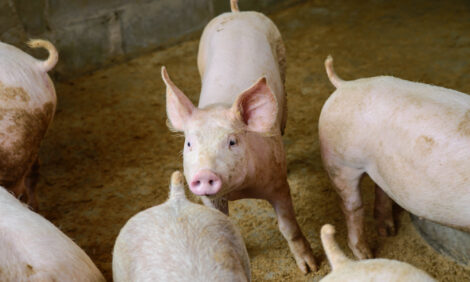



CME: Plenty of Talk of a Resurgence of A/H1N1
US - According to CME's Daily Livestock Report for 13 July, USDA updated on Friday its estimates of US meat production for 2009 and 2010, changing some of the forward projections based on new estimates of US grain production as well as more optimistic outlook for the US economy.Expected lower grain prices will likely slow down the pace of liquidation in the red meat sector but they will not stop it. USDA lowered its estimates for US beef production in 2009 by 165 million pounds, in part due to revised numbers for 2009 Q2 production and a downward revision for Q3. USDA also lowered 2010 beef production estimates by 40 million pounds to 25.950 billion, 1.3 per cent lower than in 2009. Pork numbers were adjusted slightly higher for 2009 and received a boost for 2010, a nod to the increase in corn output. USDA raised its 2010 pork production estimate by 190 million pounds to 22.535 billion pounds.
While pork production in 2010 will be 1.1 per cent lower than in 2009, it will still be the third largest amount of pork ever produced. This could be construed as negative by those holding a more bearish view of the pork complex. The bullish view likely would look at not just the supply side, i.e. still very large production levels compared to 2004 and 2005 but also account for the significant increase in US pork exports and the impact this has had on per capita pork consumption in the US. While 2010 pork production is expected to be the third largest ever, per capita pork consumption is expected to decline 3.7 per cent from the previous year and be the smallest per capita pork consumption level since 1978. It will all depend, however, on robust pork export sales.
There is plenty of talk at the moment of a resurgence of H1N1 flu this fall. While irrational in its application to pork, a resurgence of the flu virus could negatively impact trade should some countries decide to use it to raise trade barriers. USDA currently expects US pork exports in 2010 to be 4.45 billion pounds, 6.4 per cent higher than in 2009 but below the record level established in 2008 (4.67 billion). Broiler production is expected to increase from the sharp contraction of 2009.
As the chart below shows, broiler production did not accelerate as much as pork so the dynamic in that market is somewhat different. One note in reading the attached charts. Because of the varying volume of beef, pork and poultry production, it was difficult to present them in a meaningful way using the same scale. However, one has to be careful when setting the scale on a chart as it could leave the wrong impression. As a result, we set the ratio between the low and high side of the range at roughly the same levels (~1.2), which allows you to gauge which item has been increasing at a faster pace in recent years.









